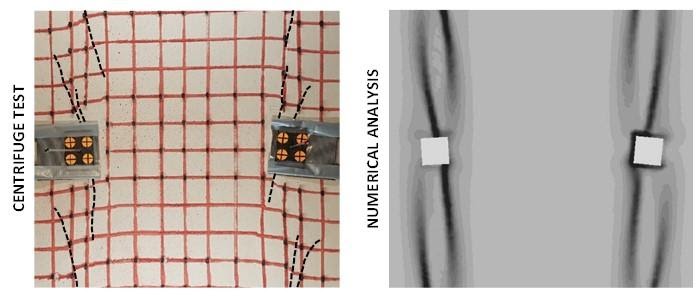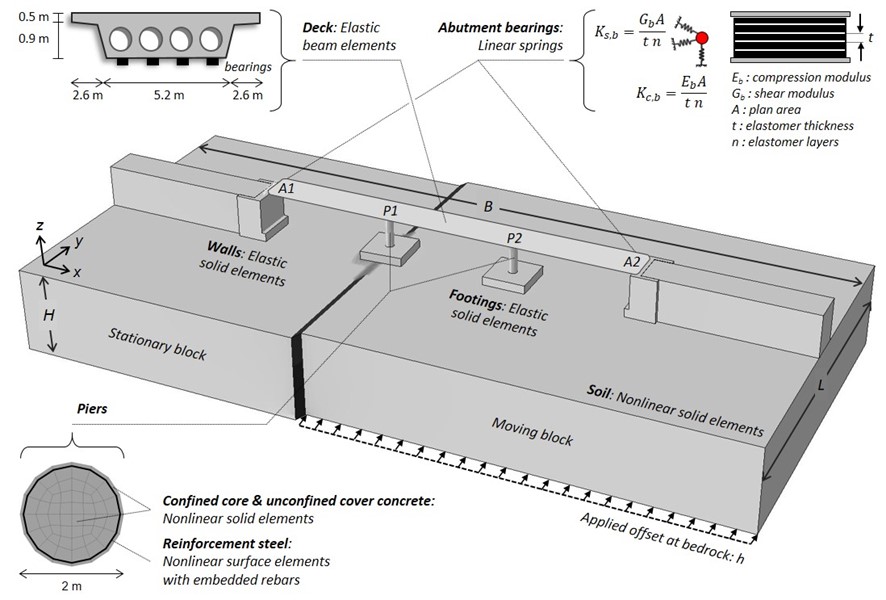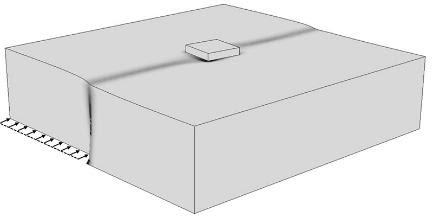Strike-Slip Faulting
Our recent work focuses on strike–slip faulting, a purely three-dimensional (3D) problem as opposed to dip–slip faulting. We have been studying strike-slip fault rupture propagation through sand and its interaction with shallow foundations, combining numerical and centrifuge modelling (external page J84). We have extended the strain softening constitutive model, incorporating post-yield isotropic frictional hardening and softening (MC–HS model). The MC-HS model covers the entire range from elastic to fully-softened response, capturing the deviatoric and volumetric behaviour of dense sand, and especially its pre-softening volumetric response, which is crucial for the simulation of the complex mechanisms of strike-slip faulting such as Riedel shears. Using the carefully MC-HS validated model, we have identified the mechanisms governing foundation response.

Aiming to develop simplified design techniques, we have been studying the performance of representative bridges subjected to strike‐slip faulting (external page J95), employing advanced 3D finite element (FE) modelling of the entire bridge–foundation–abutment–soil system. The piers are modelled with the concrete damaged plasticity (CDP) model, which accounts for the interaction between axial force N, bending moment M, shear force Q and torsion T (NMQT). After deriving insights on the key mechanisms affecting the response, using the detailed 3D FE model as benchmark, we have developed a cost-efficient analysis technique in which the soil‐foundation system is modelled in detail only for the pier directly affected by the fault, with nonlinear springs representing the foundations of the remaining piers. The proposed technique offers a computationally efficient means to parametrically analyse long multi-span bridges subjected to faulting, for which full 3D FE modelling is impractical.

Selected recent publications

Agalianos A., de Coquereaumont O., Anastasopoulos I. (2020). “Rigid slab foundation subjected to strike–slip faulting: mechanisms and insights”, Geotechnique, 70(4): 354-373 (external page J84).

Agalianos A., Sieber M., Anastasopoulos I. (2020). “Cost-effective analysis technique for the design of bridges against strike-slip faulting”, Earthquake Engineering and Structural Dynamics, 49: 1137-1157 (external page J95).